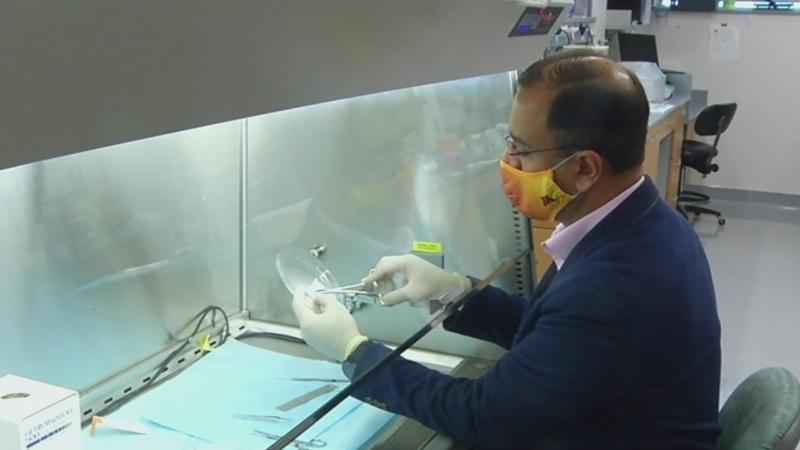U of M researcher creates medical innovative heart valve that grows with the body
[anvplayer video=”5016497″ station=”998122″]
Researchers at the University of Minnesota revealed an unprecedented medical innovation: they created a heart valve in a lab that is able to grow with the recipient over time.
"It will be really a groundbreaking discovery for pediatric patients," said Zeeshan Syedain, a senior research scientist who has been working on this project.
The idea for the pediatric heart valve replacement project started 23 years ago.
Lead researcher Robert Tranquillo said thousands of children in the United States are born with congenital heart defects each year, including some who need immediate open-heart surgery due to missing or malformed valves.
"The current replacement valves that are available don’t have the ability to grow, so these babies face the prospect of repeated open heart surgeries until they become fully grown adults," said Tranquillo, who is a biomedical engineering professor at the University of Minnesota. "We see a lot of potential impact for this and that gets us out of bed every morning. It could have a huge impact for the baby, that family and the health care system as a whole."

5 EYEWITNESS News has been following Tranquillo’s team since 2016, when they first created blood vessels that could grow inside a recipient. They have been trying to take their research one step further, with heart valves.
The project has received funding from the National Institutes of Health, University of Minnesota grants and donations.
"The material we use is unique to our laboratory. It’s something we’ve been working on almost my entire career here at Minnesota," Tranquillo explained.
Tranquillo said they use donor skin cells to create biologic material, using a specialized tissue engineering technique.
"This process to create the tissue takes seven weeks," explained Syedain.
The team then uses a detergent to strip away the skin cells. The decellularized material can then be stored for six months or more, giving it a longer shelf life before being implanted into a recipient.
They went through several different designs for the heart valve, which involves sewing together three tubes of the tissue into a functioning valve.
They initially tested the valves in a mechanical heart and found the design worked.
The next step was to see if it would function and grow inside an animal.
"The sheep is the accepted model for studying heart valves because the sheep’s heart is roughly the same size as the human heart," Tranquillo explained. "We implanted seven of these valves into seven different lambs over the course of about two and a half years."
Tranquillo said the team was excited to discover the cells inside the sheep’s body did, in fact, reanimate the tissue of the valve.
They found the valve grew inside the sheep from a diameter of 19 mm to about 25 mm. The researchers also saw a 17-34% increase in the length of the valve leaflets as measured from ultrasound images.
The researchers said it also showed reduced calcification and improved blood flow function compared to the valves currently in use in humans.
"Of course, we were tremendously excited," Tranquillo said. "And we are quite optimistic that can be reproduced in a human baby as well."
The University of Minnesota research was published last week in Science Translational Medicine, an interdisciplinary medical journal by the American Association for the Advancement of Science.
The valve-making procedure has also been patented and licensed to the University of Minnesota startup company Vascudyne, Inc., based in Stillwater.
Tranquillo said the finding involving the sheep puts them a one step closer to clinical trials in humans, which he hopes will happen in three to five years.
"If this actually works in a human, it would be a tremendous medical breakthrough," Tranquillo said.
He said, if the Food and Drug Administration ultimately approves the valve, it could be used in hospitals within the next five to eight years.